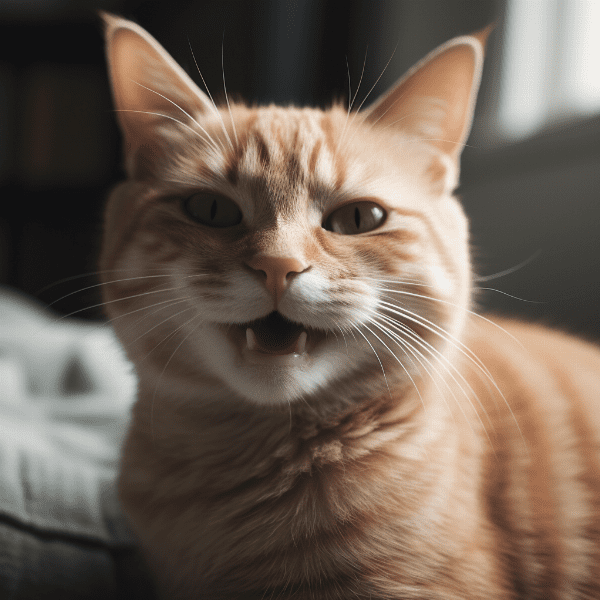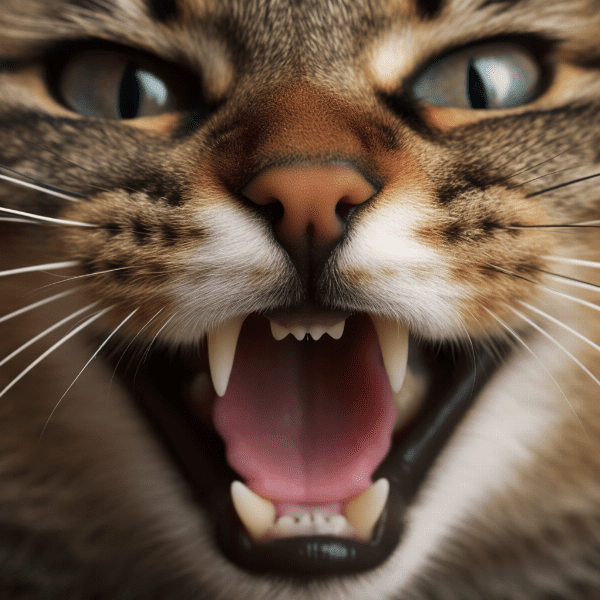Table of Contents
- Understanding Periodontal Disease in Cats
- Symptoms of Periodontal Disease in Cats
- Causes of Periodontal Disease in Cats
- Prevention of Periodontal Disease in Cats
- Diagnosis of Periodontal Disease in Cats
- Treatment Options for Periodontal Disease in Cats
- Home Care for Cats with Periodontal Disease
- Importance of Regular Dental Checkups for Cats
- Complications of Untreated Periodontal Disease in Cats
- Final Thoughts on Periodontal Disease in Cats
Understanding Periodontal Disease in Cats
Periodontal disease is a common dental problem in cats. It is a serious condition that affects the tissues surrounding the teeth, including the gums, ligaments, and bone. When left untreated, periodontal disease can cause pain, discomfort, and tooth loss in cats.
How Does Periodontal Disease Develop?
Periodontal disease in cats starts with the accumulation of plaque on the teeth. Plaque is a sticky film of bacteria that forms on the teeth and gums. If it is not removed, it can harden into tartar, which can only be removed by a professional dental cleaning.
As tartar accumulates on the teeth, it can cause inflammation of the gums, known as gingivitis. Gingivitis can progress to periodontal disease when the inflammation spreads deeper into the tissues surrounding the teeth. This can lead to the breakdown of the ligaments and bone that support the teeth, causing them to become loose and eventually fall out.
What are the Risk Factors for Periodontal Disease in Cats?
There are several risk factors that can increase a cat’s likelihood of developing periodontal disease. These include:
- Age: Older cats are more susceptible to periodontal disease than younger cats.
- Diet: Cats that eat a diet high in carbohydrates are more prone to developing periodontal disease.
- Genetics: Some cats may be predisposed to developing periodontal disease due to their genetics.
- Poor dental hygiene: Cats that do not receive regular dental cleanings or have poor dental hygiene are at a higher risk of developing periodontal disease.
How Can Periodontal Disease in Cats be Prevented?
Preventing periodontal disease in cats starts with good dental hygiene. Regular tooth brushing with a cat-friendly toothpaste is the most effective way to remove plaque from the teeth and prevent the development of periodontal disease. Additionally, feeding cats a balanced diet and providing them with appropriate chew toys can help promote dental health.
It is also important to schedule regular dental checkups with a veterinarian. During these checkups, the vet can examine the cat’s teeth and gums for signs of periodontal disease and recommend appropriate treatment if necessary.

Symptoms of Periodontal Disease in Cats
Signs of Early Periodontal Disease
In the early stages of periodontal disease, cats may exhibit the following signs:
- Bad breath: One of the most common signs of periodontal disease in cats is bad breath, also known as halitosis.
- Red or inflamed gums: Healthy gums should be pink, firm, and smooth. If a cat’s gums appear red or inflamed, this may be a sign of early periodontal disease.
- Tartar buildup: Tartar appears as a yellow or brownish coating on the teeth, especially along the gum line.
Signs of Advanced Periodontal Disease
If periodontal disease is left untreated, it can progress to a more advanced stage, which can cause more serious symptoms, including:
- Loose or missing teeth: As the ligaments and bone that support the teeth are destroyed, the teeth may become loose or even fall out.
- Difficulty eating: Cats with advanced periodontal disease may have difficulty eating or may avoid eating altogether due to pain and discomfort.
- Swollen or bleeding gums: In advanced cases of periodontal disease, the gums may become swollen, bleed easily, or even recede from the teeth.
What to Do if You Suspect Your Cat Has Periodontal Disease
If you suspect that your cat has periodontal disease, it is important to schedule an appointment with a veterinarian as soon as possible. The vet can examine the cat’s teeth and gums and recommend appropriate treatment to alleviate the pain and discomfort associated with periodontal disease.
In conclusion, cat owners should be aware of the symptoms of periodontal disease in cats, especially in its early stages when treatment is most effective. By paying attention to changes in a cat’s behavior, including bad breath, red or inflamed gums, and tartar buildup, cat owners can help ensure their pets receive the dental care they need to stay healthy and pain-free.

Causes of Periodontal Disease in Cats
Periodontal disease in cats can be caused by a variety of factors, including genetics, diet, and dental hygiene.
Genetics
Some cats may be genetically predisposed to developing periodontal disease. Certain breeds, such as Persians and Siamese, are more prone to developing dental problems, including periodontal disease.
Diet
A cat’s diet can also play a role in the development of periodontal disease. Cats that eat a diet high in carbohydrates, especially dry kibble, are more prone to developing plaque and tartar buildup on their teeth. This can lead to inflammation of the gums and eventually progress to periodontal disease.
Dental Hygiene
Proper dental hygiene is essential in preventing periodontal disease in cats. Cats that do not receive regular dental cleanings or have poor dental hygiene are at a higher risk of developing periodontal disease. This is because plaque and tartar can accumulate on their teeth, causing inflammation of the gums and eventually leading to the breakdown of the ligaments and bone that support the teeth.
Other Factors
Other factors that may contribute to the development of periodontal disease in cats include age, overall health, and lifestyle. Older cats are more susceptible to periodontal disease than younger cats, and cats with underlying health conditions, such as diabetes or kidney disease, may be at a higher risk. Additionally, cats that live in stressful environments or have a sedentary lifestyle may be more prone to developing periodontal disease.
In conclusion, there are several factors that can contribute to the development of periodontal disease in cats, including genetics, diet, dental hygiene, age, overall health, and lifestyle. By being aware of these factors and taking appropriate steps to prevent periodontal disease, cat owners can help ensure their pets live healthy, pain-free lives.

Prevention of Periodontal Disease in Cats
Preventing periodontal disease in cats is essential in maintaining their dental health and overall wellbeing. There are several steps that cat owners can take to prevent the development of periodontal disease.
Regular Dental Cleanings
Regular dental cleanings are essential in preventing periodontal disease in cats. Cats should have their teeth professionally cleaned at least once a year, or more frequently if they are prone to dental problems. During a dental cleaning, a veterinarian will remove plaque and tartar from the teeth, as well as perform a thorough examination of the cat’s mouth for signs of periodontal disease.
Lifestyle
A cat’s lifestyle can also play a role in the development of periodontal disease. Cats that live in stressful environments or have a sedentary lifestyle may be more prone to developing periodontal disease. Cat owners can help prevent the development of periodontal disease by providing their cats with a healthy, stress-free environment and encouraging regular exercise.
In conclusion, preventing periodontal disease in cats requires a combination of regular dental cleanings, tooth brushing, a balanced diet, regular dental checkups, and a healthy lifestyle. By taking these steps, cat owners can help ensure their pets live healthy, pain-free lives.
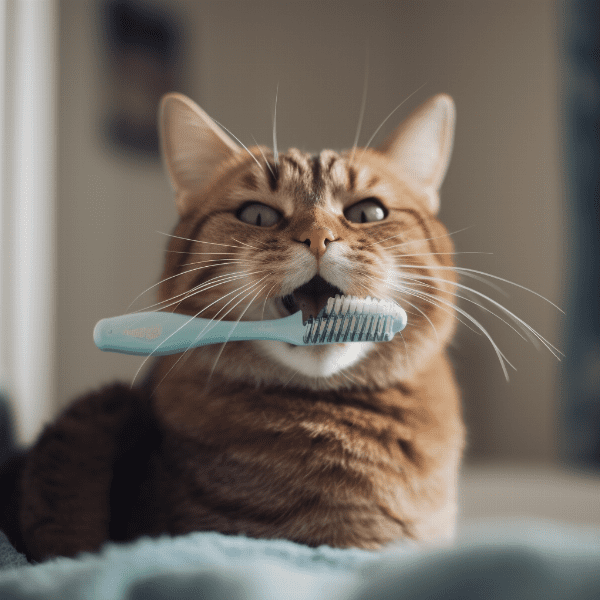
Diagnosis of Periodontal Disease in Cats
Periodontal disease in cats can be difficult to detect in its early stages, as cats are masters at hiding pain and discomfort. However, there are several diagnostic tools that veterinarians can use to diagnose periodontal disease in cats.
Visual Examination
A visual examination of the teeth and gums is the first step in diagnosing periodontal disease in cats. During a visual examination, a veterinarian will examine the cat’s mouth for signs of redness, swelling, tartar buildup, or other abnormalities that may indicate the presence of periodontal disease.
Dental X-Rays
Dental X-rays are an important tool in diagnosing periodontal disease in cats. X-rays can reveal the extent of bone loss and damage to the ligaments surrounding the teeth, which may not be visible during a visual examination. This information can help a veterinarian determine the severity of the periodontal disease and recommend appropriate treatment.
Periodontal Probing
Periodontal probing is a procedure in which a veterinarian uses a special tool to measure the depth of the pockets between the teeth and gums. Deep pockets may indicate the presence of periodontal disease, as healthy gums should fit tightly around the teeth.
Anesthesia
In some cases, anesthesia may be necessary to properly diagnose periodontal disease in cats. Anesthesia allows a veterinarian to perform a thorough dental cleaning, as well as a more extensive examination of the teeth and gums.
Other Diagnostic Tests
In some cases, a veterinarian may recommend additional diagnostic tests to help diagnose periodontal disease in cats. These may include blood tests, urinalysis, or other imaging studies, depending on the cat’s overall health and the severity of the periodontal disease.
In conclusion, diagnosing periodontal disease in cats requires a combination of visual examination, dental X-rays, periodontal probing, anesthesia (if necessary), and other diagnostic tests as needed. By properly diagnosing periodontal disease in cats, veterinarians can recommend appropriate treatment to alleviate pain and discomfort and improve the cat’s overall dental health.
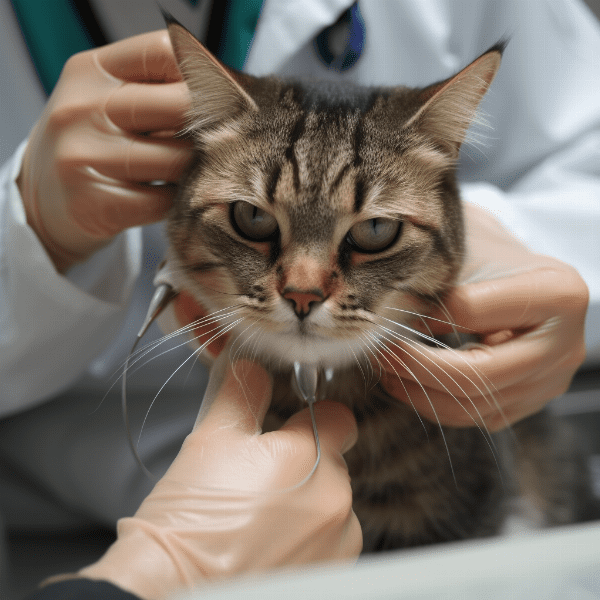
Treatment Options for Periodontal Disease in Cats
Periodontal disease in cats can be a serious condition that can cause pain, discomfort, and tooth loss. Fortunately, there are several treatment options available to help manage periodontal disease in cats.
Antibiotics
In some cases, antibiotics may be prescribed to help manage periodontal disease in cats. Antibiotics can help reduce inflammation and control the growth of bacteria in the mouth. Antibiotics may be given orally or applied topically to the gums.
Tooth Extraction
In severe cases of periodontal disease, tooth extraction may be necessary to alleviate pain and discomfort and prevent further damage to the surrounding tissues. This procedure is typically done under anesthesia and involves removing the affected tooth or teeth.
Home Care
In addition to professional treatment, home care is also an important part of managing periodontal disease in cats. Cat owners should brush their cat’s teeth daily with a cat-friendly toothpaste and toothbrush. Additionally, feeding cats a balanced diet and providing appropriate chew toys can help promote dental health.
In conclusion, treatment options for periodontal disease in cats include professional dental cleaning, antibiotics, tooth extraction, pain management, and home care. By working with a veterinarian and providing appropriate treatment and home care, cat owners can help manage periodontal disease in their pets and improve their overall dental health.

Home Care for Cats with Periodontal Disease
Proper home care is an important part of managing periodontal disease in cats. By providing appropriate home care, cat owners can help prevent the development of periodontal disease and improve their cat’s overall dental health.
Tooth Brushing
Tooth brushing is the most effective way to prevent the buildup of plaque and tartar on a cat’s teeth. Cat owners should brush their cat’s teeth daily using a cat-friendly toothpaste and toothbrush. This will help remove food particles and bacteria from the teeth and gums, and prevent the development of periodontal disease.
Dental Treats and Toys
Providing cats with appropriate dental treats and toys can also help promote dental health. Dental treats are designed to help remove plaque from the teeth and freshen breath, while dental toys can help massage the gums and promote healthy chewing behavior.
Diet
A balanced diet is essential in maintaining a cat’s dental health. Cats should be fed a diet that is high in protein and low in carbohydrates, as carbohydrates can promote the growth of bacteria in the mouth. Additionally, feeding cats wet food can help prevent the development of plaque and tartar on their teeth.
Regular Dental Checkups
Regular dental checkups are important in maintaining a cat’s dental health. During a dental checkup, a veterinarian can examine a cat’s teeth and gums for signs of periodontal disease and recommend appropriate treatment if necessary.
Patience and Persistence
It may take time for cats to get used to tooth brushing and other dental care routines. Cat owners should be patient and persistent in their efforts to promote dental health in their pets. It may take several weeks or even months for cats to become comfortable with tooth brushing, but with patience and persistence, cat owners can help prevent the development of periodontal disease and promote healthy dental habits in their pets.
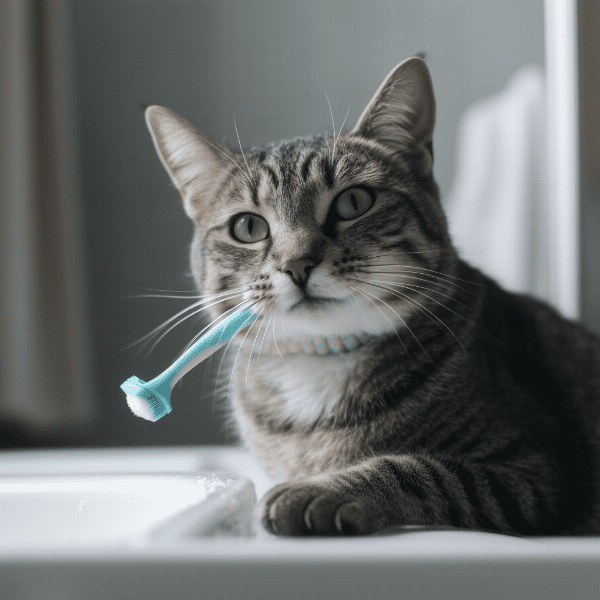
Importance of Regular Dental Checkups for Cats
Early Detection of Dental Problems
Regular dental checkups allow veterinarians to detect dental problems early, before they become more serious. By detecting dental problems early, veterinarians can recommend appropriate treatment to prevent further damage to the teeth and gums.
Professional Dental Cleaning
Professional dental cleaning is an essential part of maintaining a cat’s dental health. During a dental cleaning, a veterinarian will remove plaque and tartar buildup from the teeth and gums, as well as perform a thorough examination of the cat’s mouth for signs of periodontal disease. This procedure is typically done under anesthesia to ensure the cat remains still and comfortable during the cleaning.
Overall Health Assessment
Regular dental checkups also allow veterinarians to assess a cat’s overall health. By examining a cat’s teeth and gums, as well as performing a physical examination, veterinarians can identify underlying health problems that may be affecting a cat’s dental health.
Home Care Recommendations
During a dental checkup, veterinarians can also provide recommendations for home care to help promote a cat’s dental health. This may include tooth brushing techniques, appropriate dental treats and toys, and recommendations for a balanced diet.
Pain Management
Cats with dental problems may experience pain and discomfort, which can affect their overall quality of life. Regular dental checkups allow veterinarians to identify and manage pain associated with dental problems, improving the cat’s overall comfort.
In conclusion, regular dental checkups are an essential part of maintaining a cat’s dental health. By scheduling regular dental checkups, cat owners can help prevent the development of periodontal disease, receive professional dental cleanings, assess overall health, receive home care recommendations, and manage pain associated with dental problems.

Complications of Untreated Periodontal Disease in Cats
Periodontal disease in cats can cause a variety of complications if left untreated. It is important for cat owners to be aware of these potential complications and take appropriate steps to prevent and treat periodontal disease.
Tooth Loss
One of the most common complications of untreated periodontal disease in cats is tooth loss. As periodontal disease progresses, the ligaments and bone that support the teeth can break down, causing the teeth to become loose and eventually fall out.
Pain and Discomfort
Periodontal disease can cause pain and discomfort in cats, especially as it progresses. Cats may experience difficulty eating or may refuse to eat altogether due to dental pain. This can lead to weight loss and malnutrition, which can further exacerbate health problems.
Infection
Untreated periodontal disease can also lead to infection, as bacteria can enter the bloodstream through inflamed gum tissue. This can cause a variety of health problems, including kidney disease, liver disease, and heart disease.
Systemic Health Problems
Periodontal disease has been linked to several systemic health problems in cats, including diabetes, kidney disease, and respiratory disease. These health problems may be exacerbated by the presence of periodontal disease, as the infection and inflammation associated with periodontal disease can affect the entire body.
Costly Treatment
Treating advanced periodontal disease can be costly and time-consuming. In addition to professional dental cleaning, cats with advanced periodontal disease may require tooth extractions, antibiotics, and pain management medications. The cost of these treatments can quickly add up, making prevention and early detection of periodontal disease even more important.
In conclusion, untreated periodontal disease in cats can cause a variety of complications, including tooth loss, pain and discomfort, infection, systemic health problems, and costly treatment. By being aware of these potential complications and taking appropriate steps to prevent and treat periodontal disease, cat owners can help ensure their pets live healthy, pain-free lives.
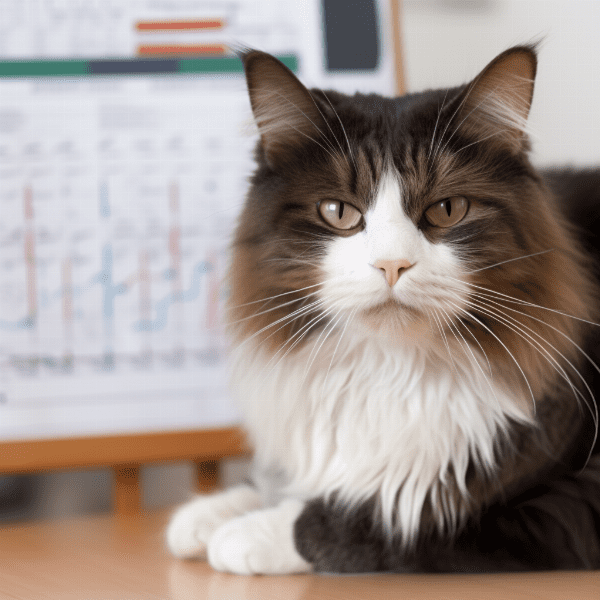
Final Thoughts on Periodontal Disease in Cats
Periodontal disease is a common dental problem in cats that can cause a variety of complications if left untreated. However, with proper prevention, diagnosis, and treatment, cat owners can help ensure their pets maintain healthy teeth and gums.
Prevention is Key
Prevention is the most effective way to manage periodontal disease in cats. By providing appropriate home care, scheduling regular dental checkups, and feeding a balanced diet, cat owners can help prevent the development of periodontal disease and other dental problems.
Early Detection and Treatment
Early detection and treatment of periodontal disease is essential in preventing complications such as tooth loss, pain and discomfort, infection, and systemic health problems. By scheduling regular dental checkups and being aware of the symptoms of periodontal disease, cat owners can help ensure their pets receive appropriate treatment in a timely manner.
Partner with a Veterinarian
Partnering with a veterinarian is an important part of managing periodontal disease in cats. Veterinarians can provide professional dental cleanings, diagnose and treat dental problems, and provide recommendations for home care and prevention.
Home Care is Important
Home care is an essential part of managing periodontal disease in cats. By providing appropriate dental care routines and feeding a balanced diet, cat owners can help ensure their pets maintain healthy teeth and gums.
In conclusion, periodontal disease is a serious dental problem in cats that requires proper prevention, diagnosis, and treatment. By working with a veterinarian and providing appropriate home care, cat owners can help ensure their pets maintain healthy teeth and gums and live healthy, pain-free lives.
